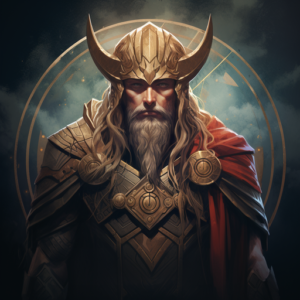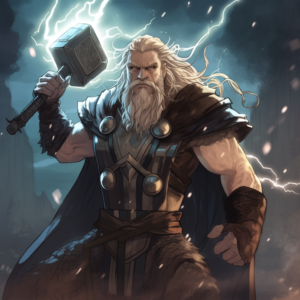Ra is the Egyptian god of the Sun. He was also the predominant creator god in ancient Egyptian religion. He was the most powerful and most worshiped of all Egyptian gods. The sun, and therefore Ra, represented life, warmth, and growth to ancient Egyptians. He was so important that he earned the status of King of the Gods, with the Egyptian kings or pharaohs holding the title “sons of Ra.”
Understanding and describing Ra is difficult because of the many forms he was depicted in, as well as the practice of creating new deities by merging existing deities. As one of the creator gods, Ra created himself before his identity was combined with several other gods, including Horus and Atum. This resulted in new names such as Ra-Horakhty and Atum-Ra.
Origins
Reference to Ra was first made during the Second Dynasty of ancient Egypt (c. 2890 – c. 2686 BC), also known as the Old Kingdom. His stature grew to that of a major god by the Fifth Dynasty (c. 2494 – c. 2345 BC).
Family
The eye of Ra is an extension of Ra’s power, and is the feminine counterpart to the sun god in Egyptian mythology. His daughters Bastet, Sekhmet, and Hathor were all considered to be “eyes of Ra” and instruments of his vengeance.
Together with Atum, Ra also fathered Shu, the god of wind, and Tefnut, the goddess of rain. Tefnut gave birth to Nut and Geb, who in turn were the parents of Osiris, Isis, Set, and Nephthys. These nine make up the Heliopolitan Ennead.
Symbols
Ra is pictured and represented in many pieces of ancient Egyptian art found in temples, tombs, hieroglyphics, relics, and other relics. He was generally depicted in human form, most notably with a falcon head crowned with a sun disc; a sacred cobra called Uraeus encircled the disc. Sometimes his head also took the form of a ram or a beetle, depending on the deity with whom he merged.
Powers & Duties
The ancient Egyptians believed Ra created all forms of life by calling them into existence using their secret names. Alternatively, some narratives also stated that man was created from Ra’s tears and sweat.
The sun god was believed to travel across the sky in a solar bark with the sun on his head. He traveled through the underworld in a bark called Sektet (meaning “growing weaker”) during the night, defending himself against and overcoming monsters such as the serpent Apophis. The prayers and the blessings of the living supposedly accompanied him together with the souls of the dead. In the morning he traveled in a bark called Matet (meaning “becoming stronger”).
Worship
Egyptian pharaohs spent most of their money on sun temples during the Fifth Dynasty. They were specially aligned in Ra’s honor. By the time the New Kingdom arrived (c. 1550 BC), the worship became more elaborate. Detailed texts describing Ra’s journey on the sun boats were written on tomb walls, while hymns, prayers, and spells were created in acts of worship.
Heliopolis, meaning sun city in Greek, was the principal seat of worship of Ra. It was known as Iunu or “place of the pillars” in ancient Egypt. Its remains can still be seen today in the Cairo suburb of Al-Matariyyah.
Facts About Ra
- Many solar temples were built in honor of Ra, but none featured a statue of him. Instead, he was represented by the sunlight openly flowing into the temple, which had an obelisk and altar at its center.
- A scarab beetle called Khepri who rolled up the sun at sunrise was seen as Ra’s morning manifestation;
- At sunset Ra manifested in Khnum, another creator god, normally depicted with a ram’s head;
- At noon, when the sun was most powerful, the sun god was just Ra;
- Apep, the god of chaos, was Ra’s greatest enemy. He supposedly tried to swallowed Ra as the sun god entered the underworld, causing the sun to set. When he spat Ra out after not succeeding in his quest, the sun rose again;
- Many solar temples were built in honor of Ra, but none featured a statue of him. Instead, he was represented by the sunlight openly flowing into the temple, which had an obelisk and altar at its center;
- Egyptian mythology links Ra to the Tree of Life, a sacred symbol in the solar temple at Heliopolis. The fruit of the Tree of Life gave eternal life, although it was only available to the gods and aging pharaohs;
- The Tree of Life was seat to Bennu, the mythological phoenix that represented Ra’s soul;
- The worship of Ra began to fade with the rise of Christianity after the Romans conquered Egypt around 30 BC.





